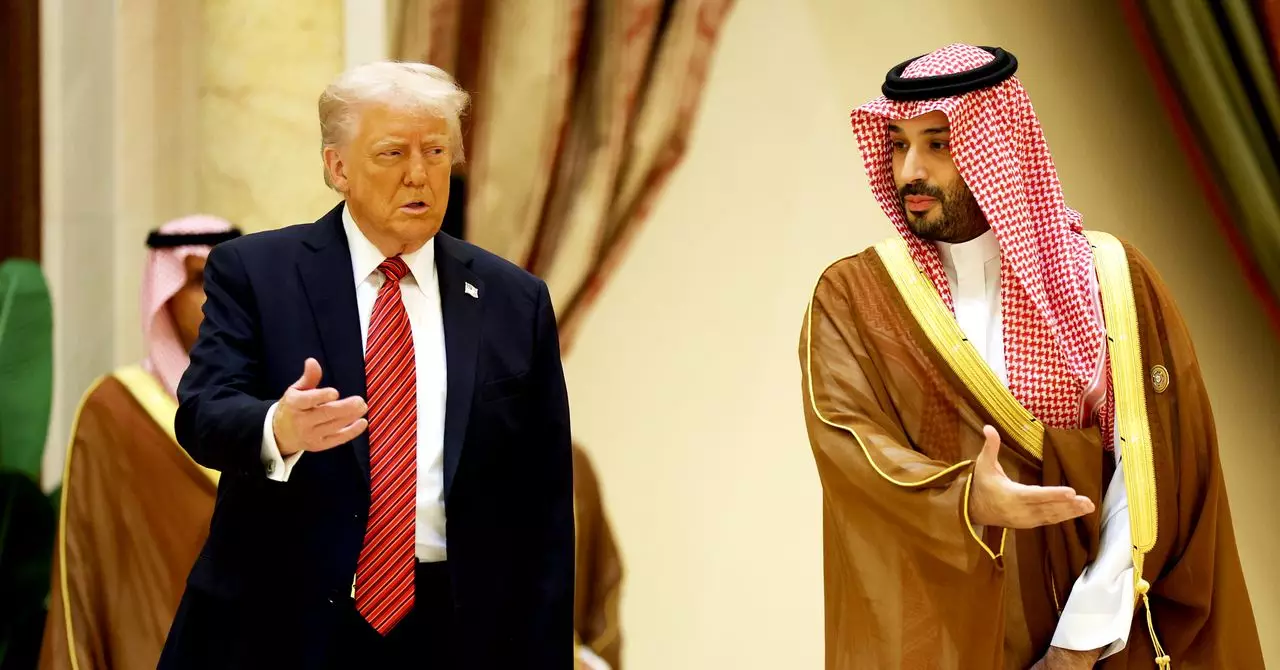In a striking display of diplomacy fused with technological ambition, former President Donald Trump’s recent expedition to the Middle East marked a significant chapter in international tech collaborations. Accompanied by an elite group of billionaire entrepreneurs, Trump’s journey was characterized not just by high-profile meetings but also by an agenda that aimed to reshape the technological landscape on a global scale. This venture took on a life of its own, spotlighting efforts to enhance the capabilities of artificial intelligence (AI) in the Gulf region, thereby establishing an alliance that could redefine the future of innovation.
At the journey’s conclusion in Abu Dhabi, Trump unveiled plans for a groundbreaking partnership between unnamed U.S. tech firms and the United Arab Emirates (UAE) with the ambitious objective of constructing the largest AI datacenter cluster outside the United States. By collaborating with G42, an Emirati tech company, U.S. firms are set to engineer an impressive five gigawatts of AI computing power. This monumental initiative is backed by the UAE’s strategic vision, championed by Sheikh Tahnoon bin Zayed Al Nahyan, who oversees a massive fortune earmarked for advancing AI capabilities. The UAE’s commitment is to convert this investment into a learning ecosystem that stands to revolutionize research and spur sustainable advancements for an ever-evolving humanity.
Saudi Arabia’s Ambitious AI Investments
However, the technological tempest extends beyond the borders of the UAE. Saudi Arabia, with its newly minted AI investment firm, Humain—funded by the kingdom’s Public Investment Fund—has already committed to partnering with leading U.S. tech giants such as Nvidia, AMD, and AWS. The vast sums at play, which could reach hundreds of billions, serve not merely as financial transactions, but as strategic moves to elevate Saudi Arabia and its neighbors into significant players in the global AI arena. This shift reflects a broader intention to decentralize technological supremacy, which has mostly favored Western nations, and to create a milieu where Middle Eastern countries can wield considerable influence.
The importance of the partnership between Humain and Nvidia is particularly noteworthy. Saudi Arabia aims to harness 500 megawatts of AI capacity through this deal, involving the procurement of cutting-edge GPUs vital for AI development. These advanced chips hold the potential to enhance Saudi Arabia’s capabilities in creating pioneering AI models, thereby catalyzing innovation that extends beyond geographic boundaries. As competitive as it is promising, this cooperation signifies a crucial juncture where power, technology, and ambition meet.
The Geopolitical Implications of AI Development
While the financial implications and technological advancements are significant, a more subtle narrative unfolds when we examine the geopolitical context of these agreements. Countries like Saudi Arabia and the UAE have long pursued diversification of their economies, aiming to reduce reliance on oil and establish dominance in high-tech sectors. However, their parallel economic relationships with China highlight a complex challenge. These nations are positioned in a geopolitical tug-of-war, caught between Western technology investments and Chinese technological offerings.
Just prior to the whirlwind meetings in the Middle East, the Trump administration reversed a pivotal regulation from the Biden era, which sought to restrict the export of cutting-edge chip technology to countries including Saudi Arabia and the UAE. Critics of the previous directive raised concerns that strict limitations could incentivize these nations to turn towards Chinese technology, thus complicating the balance of power in technology access. Trump’s sudden regulatory shift indicates a strategic pivot designed not only to bolster American tech dominance but also to reinforce relationships with Middle Eastern allies who stand at the precipice of a technological renaissance.
A Future Rich with Opportunity and Challenges
As U.S. companies engage more deeply with the Gulf region, the implications stretch far beyond immediate profits or collaborations. This new partnership signals a broader acceptance of a multipolar world order in technology, where countries once alienated from advanced development can now ascend as key players. The investment landscape brims with opportunities—yet it also faces the specter of skills disparity, ethical considerations in AI development, and the looming threat of a technological arms race.
With significant oil wealth, ample resources, and a steadfast commitment to modernization, the Gulf states are arguably in a prime position to influence future trends in AI. However, the challenge lies in ensuring that these advancements benefit not only the local economies but also the greater global community. As they chart their course in the evolving world of AI technology and innovation, the Middle Eastern nations must navigate a complex interplay of international alliances, market demands, and ethical responsibilities.
In this transformative era, as established powers engage with emerging ones, one thing remains clear: the world of technology is swiftly redefining itself, and those who adapt will stand poised at the forefront of the next wave of innovation.

